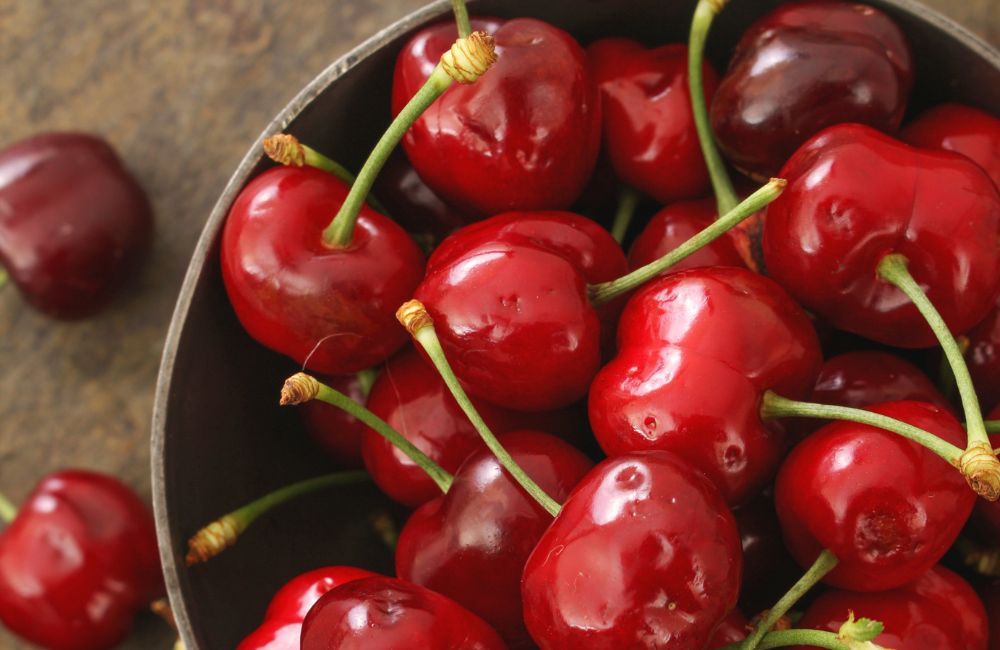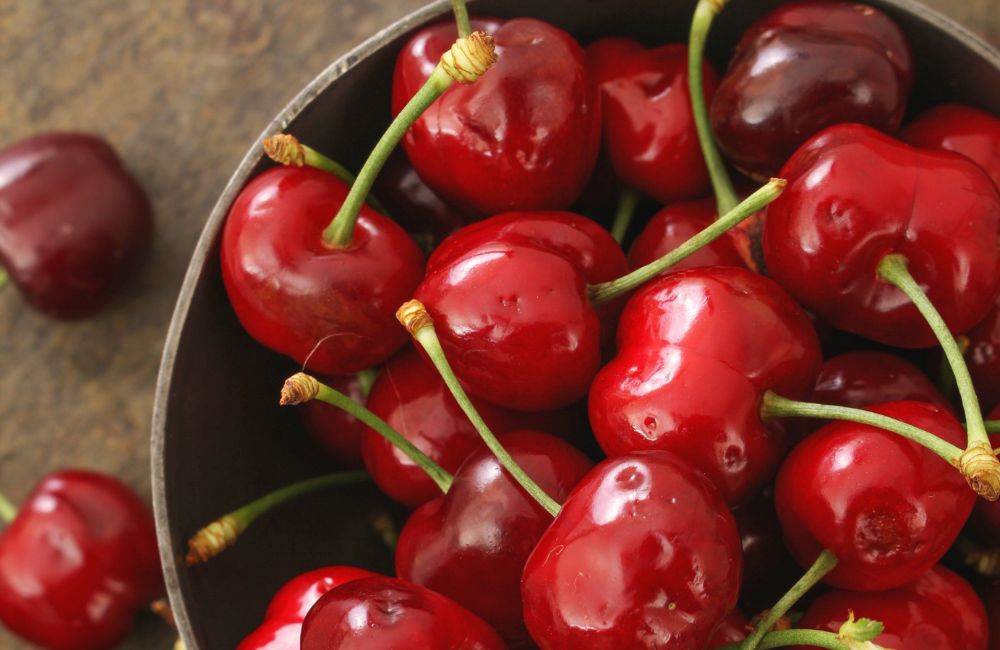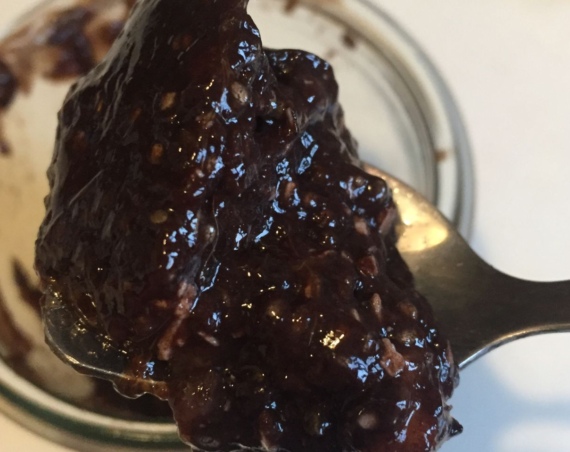
Just because you have diabetes, it doesn’t mean that you have to cut out all fruits. It’s more important that you make smart choices.
It’s a misconception that if you have diabetes, you cannot eat fruits. Yes, fruits have natural sugar. It’s why you need to make careful choices, rather than avoid them completely.
In this article I’ll share the 9 best fruits you can enjoy and some you should avoid.
The Best Fruits for Diabetics

A Word on the Glycemic Index
The glycemic index (GI) is a scale that provides insight into how quickly a food source will raise blood glucose levels after eating.
Foods that are high on the glycemic index will spike blood glucose quickly, often resulting in a blood glucose crash as well.
Foods that have a low GI level, will often cause our post-meal sugar to rise more slowly.
This causes us to feel more stable in energy over time.
High-fiber carbohydrates are digested and absorbed more slowly.
This means, they cause our blood glucose to rise gradually and they are low on the glycemic index.
Further, you can combine foods together to produce a meal that is lower on the index.
Foods that are high in protein, fat, and fiber will lower the total glycemic index of the meal.
Thus, adding these to your meal or snack can benefit blood sugar levels significantly!
High glycemic index foods can contribute to increased inflammation levels and chronic diseases over time.
High glycemic foods play a role in glucose metabolism by raising blood glucose and decreasing insulin sensitivity over time.
Decreased insulin sensitivity can increase the risk of type 2 diabetes as it is associated with nerve damage, kidney disease, and declining eyesight.
Can Diabetics Eat Fruit?
When it comes to fruit intake, many are concerned about the sugar content.
Fruit contains a type of sugar called fructose.
However, fruit can range from low to high glycemic load(GL).
Oftentimes, it is tempting to cut carbs out of the diet, but in reality, we can improve diabetes management with a little bit of moderation and an emphasis on low glycemic index fruits.
Adding low-GI foods to fruit can decrease to total glycemic load.
For example, cheese, nuts, and nut butters are all additional items that can be added to fruit to decrease the blood sugar rise after eating.
When you look at it this way, there’s not much fruit you can’t have when you pair it strategically with other foods!
Check out the list of the best fruits below for more details.
Fruits for a Diabetes Diet
The best fruits for diabetics tend to be low-carb, low-GI whole fruit with high fiber.
Ultimately, it depends on the type of fruit and the total carbohydrate to determine if your fruit intake is in a healthy range.
The American Diabetes Association (ADA) recommends whole fruit and fresh fruit as part of a healthy diet.
The ADA recommends using the plate method for a diabetes-friendly approach to overall health.
The plate method recommends a piece of fruit as part of your meal plan.
However, for people with diabetes, we want to consider the total amount of carbs at each meal – including the amount of fruit.
The plate method, endorsed by the USDA, is a simple way to divide your plate into the right portions.
The plate is divided into sections: one-quarter for protein, one-quarter for starch or a portion of fruit, and half your plate for non-starchy vegetables.
So what are low glycemic fruits? Let’s take a look at the best fruits for people with diabetes.
Strawberries
All berries are naturally sweet and one of the best sources of dietary fiber from fruit!
They are a good choice as they are one of the lowest-sugar fruits!
Especially when picked during the peak of the season, strawberries are quick to satisfy your sweet tooth.
Strawberries have anthocyanins.
Anthocyanins are an antioxidant and have been associated with a reduction in insulin levels post-meal.
If you are looking for a pick-me-up that doesn’t leave your glucose on a roller coaster, you’ll want to keep these on hand!
According to the U.S. Department of Agriculture (USDA), they are low-calorie per cup and contain over 100% of our DV of Vitamin C (3).
They contain 84 calories and 12 grams of carbs.
Berries make a great dessert option. Pair with yogurt for a high-protein treat that will keep your body’s glucose levels stable!
- Carb count (CC): 12 g
- Sugar: 7 g
- GI score: 41 (low)
Blueberries
Blueberries are another wonderful low-GI food and are loaded with antioxidants such as anthocyanins.
Antioxidants are cancer-fighting nutrients that help neutralize free radicals in the body.
A diet low in fruits and veggies, and therefore, low in antioxidants has been shown to prevent cancer as well as improve high blood pressure.
Blueberries are high in fiber making them low glycemic index fruits!
One cup of this fruit provides nearly a quarter of our daily value (DV) of vitamin C which is vital for our immune system!
They are also a source of manganese and provide nearly 25% of the DV of this nutrient.
This summer berry is a healthy option for blood sugar control as they contain 4 g of fiber per serving.
Fiber helps slow digestion and decrease the sugar response in our bloodstream.
- CC: 21
- Sugar: 15
- GI score: 53 (low)
Tart Cherries
The glycemic load (GL) of tart versus sweet cherries is drastically different.
Tart cherries are lower in sugar and are one extremely low glycemic index fruit with a GI score of 20!
This fruit is unique as it contains the amino acid tryptophan and can aid in better sleep.
They may be beneficial for preventing heart disease as they contain potassium and vitamin A and C.
Potassium is crucial in managing blood pressure and may improve overall heart health.
Cherries provide nearly 20% of our DV of Vitamin A!
- CC: 19
- Sugar: 13
- GI score: 20 (very low)
Peaches
Is there anything better than juicy peaches on a hot summer day?
We think so too!
Fresh fruit consumption has been correlated with a decreased risk for chronic disease! Peaches are no exception.
One medium fruit has 50 calories and 13 g of sugar.
Peaches and other stone fruits (like apricots, plums, prunes, and cherries) are high in important vitamins and minerals.
Specifically, peaches are high in Vitamin A and Vitamin C which may boost immunity, fight infections, and help your eyesight!
Bright orange stone fruits like peaches and apricots can contribute up to 15% of your DV of Vitamin A according to the USDA!
Apricots in particular are low in carbs and provide a very low glycemic load (GL).
Try incorporating peaches, plums, or apricots into hot or cold cereal or on top of a salad, or grill them for a novel dessert idea!
- CC: 15
- Sugar: 13
- GI score: 42 (low)
Apples
Apples are chock full of important nutrients. Even though they contain sugar, like all fruits, they can be part of a balanced diet for diabetics.
The sugar in fresh fruit does not result in the same blood sugar spike as many other processed, high-sugar foods.
However, it is always best to test your blood sugar response to see how different foods affect you.
To improve a person’s blood sugar, you might consider pairing fruits like apples or pears with a low glycemic index food.
For example, apple slices would pair well with nut butter, cheese, or yogurt.
These foods have protein and fat to prevent large blood sugar spikes after eating.
One medium fruit provides about 50 calories and 14 grams of carbohydrates and about 13% of our DV of fiber. Not too shabby!
- CC: 14
- Sugar: 10
- GI score: 35 (low)
Avocado
Even though avocados seem to fit in the vegetable category since they are green, they are actually fruit!
They are high in fiber and have very few carbohydrates.
Avocados provide healthy fats known as monounsaturated fat and polyunsaturated fat known for improving cholesterol levels and keeping our hearts healthy.
The glycemic index of an avocado is a whopping 15!
The reason it has such a low GI score is that it is a low-sugar food.
While a whole avocado actually contains 17 g of carbohydrates, 13 of those are actually from fiber alone according to the USDA!
You’d be hard-pressed to find another food with that much fiber.
Avocados can help with weight loss, blood pressure, and heart health.
They are extremely low glycemic index fruits!
They are a source of Vitamin B6, magnesium, Vitamin C, zinc, and iron! Avocado provides 20% of our DV of B6 and 10% of our DV of magnesium!
- CC: 17
- Sugar: 1
- GI score: 15
Citrus Fruits
Citrus fruits like grapefruits, limes, and oranges can be part of a heart-healthy, diabetes-friendly diet.
These fruits are full of fiber and are great sources of important vitamins, like C, folate, and potassium.
Due to their high fiber content, these fruits will take longer to break down and digest.
This allows a slow release of sugar into your bloodstream and in turn, will help your blood glucose levels remain stable for longer.
These types of fruits are incredibly juicy on their own so enjoy them fresh!
Eat one small orange and you’ll get 85% of your daily value (DV) of vitamin C and 38 mg of calcium.
The USDA reports one medium fruit has about 60 calories and 12 grams of sugar!
Oranges in particular are also a source of folate providing nearly 10% of the DV per the USDA guidelines.
The potassium in citrus fruits helps manage high blood pressure!
One important thing to note here is that while a glass of orange juice may be tempting, it contains a higher sugar content and may cause elevated blood glucose levels!
Choosing fresh fruit is a great choice for managing a person’s blood sugar.
- CC: 15
- Sugar: 12
- GI score: 43 (low)
Kiwi
This fuzzy fruit is a great addition to a diabetes-friendly diet as it is preportioned and easy to eat.
One kiwi provides 100% of our DV of vitamin C! They are low in sugars at about 12 g per fruit and balanced with 2 g of fiber!
Kiwi is an easy snack or quick addition to a meal.
You can cut up this fruit and place it on top of yogurt or make a homemade fruit salad or you might simply enjoy it on its own.
- CC: 15
- Sugar: 12
- GI score: 50 (low)
Pomegranates
Pomegranates have a low glycemic load (GL) and are packed with nutrients.
They are a source of folate, thiamine, and manganese.
These nutrients work together to improve heart health, provide energy, and help regulate glucose metabolism.
One portion of fruit can provide up to 15% of our DV of fiber!
Pomegranates are a great addition to hot or cold cereals, salads, and yogurts!
- CC: 17
- Sugar: 12
- GI score: 53 (low)
What is the correct portion size?
A serving size of fruit depends on the fructose content. One serving of fruit equals about 15 grams of carbohydrates.
There is no one best fruit for diabetics, but rather, an emphasis on lower-sugar fruits and portioning can be impactful!
Choices that have about 15 g include:
- 1 small piece of fruit like apples, pears, bananas, or oranges
- 1 cup of berries like raspberries or blackberries
- 1/2 cup of canned or frozen fruit (check for no sugar added)
- 1/2 cup of “loose” fruit or cut-up fruit like grapes and pomegranates, cubed mangos
- 2 tablespoons of dried fruit such as cherries, cranberries, prunes, mangos, or raisins
What Fruits Diabetics Should Avoid?
While all whole fruits are better than fruit juice, there are some fruits for diabetics that will raise a person’s blood sugar more quickly.
Consider portion control for some of the options below.
The ADA guidelines state that one portion of fruit equals 15 g of carbohydrates.
Bananas: Bananas are both sweet and starchy.
They become sweeter as they ripen and their starchy molecules turn into a form of simple sugar.
Grapes: Grapes can be part of a healthy diet, but their portion size is smaller than other fruits at about 1/2 cup per 15 g.
Grapes contain high levels of pigmentation from anthocyanins, an antioxidant!
Melons: Melons like watermelon, Papaya, and honeydew are actually very low in sugar!
Papaya in particular is very low in calories and sugar.
However, the problem is that oftentimes, we are eating large amounts of melon in one sitting.
According to the USDA, the portion size of papaya is one cup or about one small piece of whole fruit from the melon.
Fruit juice and Dried Fruit: These forms of fruit are often high in sugar and sometimes have added syrups.
Juice and dried fruit like prunes have a concentrated amount of sugar and can be easy to overconsume.
The USDA recommends that after the age of 2 years old, we start weaning kids off of juice!
Swap out these options for a small piece of whole fruit like apples or pears instead.
Prunes are a great source of nutrients, but limit yourself to two to three at a time!
Canned Fruit
This is a great option to preserve fruit that may have a short growing season, but it is not so easy on our waistlines.
Canned fruit could contain as much sugar as a candy bar!
It certainly has added sugars which often cause a spike in blood sugar levels.
Processed Forms of Fruit
Other forms of fruit that should be limited or reconsidered include processed choices like pineapple fruit cakes, fruit salad, fruit syrups, and fruit candy bar options.
Final Take
Healthy blood sugar levels decrease inflammation and lower your risk of heart disease, stroke, and type 2 diabetes.
If you feel like you need more individualized information about foods that raise blood sugar, consult with a dietitian nutritionist for a customized meal plan.
A dietitian can provide a list of the best fruits for your medical condition.
Further, they can help you treat many chronic conditions like diabetes with nutrition.
The American Journal of Clinical Nutrition has studied the DASH diet, a diet high in fruits and vegetables and low in sodium (4).
The DASH diet is proven to improve blood pressure, lower the risk of heart disease, and prevent weight gain.
Further, people who consumed two servings of fruit per day had a 36 percent lower risk of type 2 diabetes within five years, according to a study published in June in the Endocrine Society’s Journal of Clinical Endocrinology & Metabolism (5).
All in all, if you have diabetes or other blood sugar concerns, consider following a diet that is high in vegetables and protein, reduce high glycemic index foods, and eat a variety of low-GI foods.
When it comes to fruit, consider portion sizing and how much fruit you take in at one meal or snack.


